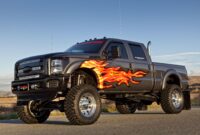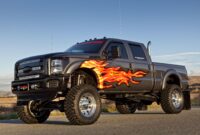U-Haul Trailer Size Chart: Your Comprehensive Guide to Choosing the Right Hauling Solution cars.truckstrend.com
Moving, transporting goods, or tackling a DIY project often requires more space than your personal vehicle can offer. This is where U-Haul, a household name in self-moving and storage, steps in with its vast fleet of rental trailers. However, the sheer variety of options can be daunting. Understanding the U-Haul Trailer Size Chart is not just about knowing dimensions; it’s about making an informed decision that saves you time, money, and stress.
This comprehensive guide will demystify the U-Haul trailer lineup, breaking down each size and type, offering practical advice on how to select the perfect trailer for your needs, and providing essential tips for a smooth and safe towing experience. By the end, you’ll be equipped to navigate the U-Haul trailer chart with confidence, ensuring your next hauling project is a complete success.
U-Haul Trailer Size Chart: Your Comprehensive Guide to Choosing the Right Hauling Solution
Understanding the U-Haul Trailer Ecosystem: Types and Their Purpose
U-Haul categorizes its trailers into several main types, each designed for specific hauling tasks. Familiarizing yourself with these categories is the first step in decoding the size chart.
1. Cargo Trailers (Enclosed)
These are perhaps the most popular choice for household moves. Enclosed trailers offer protection from the elements, security for your belongings, and a solid structure for stacking boxes and furniture. They come in various sizes, measured by their interior dimensions (length x width).
2. Utility Trailers (Open)
Utility trailers are open-top, flatbed trailers ideal for hauling oddly shaped items, construction materials, landscaping supplies, or vehicles that won’t fit in an enclosed trailer. They are measured by their deck size. Some larger utility trailers come with a ramp for easier loading.
3. Car Carriers (Auto Transports & Tow Dollies)
Specifically designed for moving vehicles, these trailers are essential for long-distance car relocations or transporting non-operable vehicles.

- Auto Transports: Full-size trailers designed to carry an entire vehicle with all four wheels off the ground.
- Tow Dollies: Two-wheel trailers that lift the front two wheels of a vehicle off the ground, allowing the rear wheels to roll on the road.
Decoding the U-Haul Trailer Size Chart: Dimensions, Capacity, and Ideal Use
The heart of choosing the right trailer lies in understanding what each size offers. Below is a detailed breakdown of U-Haul’s common trailer sizes, their key specifications, and their typical applications.
U-Haul Trailer Specifications Chart
| Trailer Type | Size (L x W) | Interior Height (Enclosed) / Deck Height (Utility) | Volume (Cu. Ft.) / Payload Capacity (lbs) | Max Gross Weight (lbs) | Ideal Use Cases | Estimated Daily Rental Rate (Varies) |
|---|---|---|---|---|---|---|
| Cargo Trailers | ||||||
| 4×8 | 8′ x 4′ | 4′ | 128 cu. ft. / 1,600 lbs | 2,500 | Small moves, college dorms, furniture, appliances, business equipment. Fits queen-size bed mattress. | Check U-Haul Website |
| 5×8 | 8′ x 5′ | 4.5′ | 180 cu. ft. / 1,800 lbs | 2,700 | Studio apartment, 1-bedroom apartment, larger furniture, multiple appliances. | Check U-Haul Website |
| 5×10 | 10′ x 5′ | 5′ | 250 cu. ft. / 1,800 lbs | 2,700 | 1-2 bedroom apartment, larger loads, more furniture. Easy to maneuver. | Check U-Haul Website |
| 6×12 | 12′ x 6′ | 5.5′ | 390 cu. ft. / 2,470 lbs | 4,400 | 2-3 bedroom home, large furniture, major appliances. Most popular size for residential moves. | Check U-Haul Website |
| Utility Trailers | ||||||
| 4×7 (Open) | 7′ x 4′ | N/A (Open) | N/A / 1,750 lbs | 2,500 | Small landscaping jobs, debris removal, motorcycles, ATVs. | Check U-Haul Website |
| 5×8 (Open) | 8′ x 5′ | N/A (Open) | N/A / 1,890 lbs | 2,900 | Larger landscaping, building materials, furniture, riding mowers. | Check U-Haul Website |
| 6×12 (Single Axle) | 12′ x 6′ | N/A (Open) | N/A / 2,670 lbs | 4,000 | Large landscaping, construction materials, large appliances, small vehicles (ATVs, golf carts). | Check U-Haul Website |
| 6×12 (Tandem Axle) | 12′ x 6′ | N/A (Open) | N/A / 4,370 lbs | 6,000 | Heaviest loads, large construction equipment, multiple ATVs/motorcycles. Tandem axles provide better stability and weight distribution for heavy items. | Check U-Haul Website |
| Car Carriers | ||||||
| Tow Dolly | Fits vehicles up to | N/A | N/A / 3,000 lbs (Towed Vehicle Weight) | 3,500 | Front-wheel drive vehicles, or rear-wheel drive vehicles with driveshaft disconnected. For short to medium distances. | Check U-Haul Website |
| Auto Transport | Fits vehicles up to | N/A | N/A / 5,290 lbs (Towed Vehicle Weight) | 7,500 | All types of vehicles, including large SUVs and trucks. Ideal for long distances, ensures no wear-and-tear on the towed vehicle’s tires. | Check U-Haul Website |
Note on Pricing: The "Estimated Daily Rental Rate" column is a placeholder. U-Haul trailer rental prices are highly dynamic and depend on several factors, including: your specific pick-up and drop-off locations, rental duration, time of year, and current availability. To get an accurate quote, it is essential to use the U-Haul website or app and input your exact rental details.
Choosing the Right Trailer Size: A Step-by-Step Guide
Selecting the appropriate trailer size is crucial for safety, efficiency, and cost-effectiveness. Here’s a systematic approach:
Step 1: Inventory Your Belongings
Before you even look at the chart, make a detailed list of everything you plan to haul. For household moves, go room by room. For utility purposes, list the specific items (e.g., sheets of drywall, bags of mulch, specific furniture pieces).
Step 2: Measure Your Largest Items
This is particularly important for enclosed cargo trailers. Measure the height, width, and depth of your largest furniture pieces (sofas, mattresses, refrigerators, dressers). Ensure they will fit through the trailer’s door opening and stand upright if necessary. Remember that interior dimensions can be slightly different from door dimensions.
Step 3: Estimate Total Volume or Weight
- For Enclosed Trailers (Volume): Think about how many rooms of furniture you have. U-Haul provides general guidelines (e.g., 5×8 for a studio, 6×12 for 2-3 bedrooms). If you have many boxes, estimate how many cubic feet they’ll occupy. When in doubt, it’s often better to go slightly larger than you think you need. A half-empty larger trailer is better than a full, too-small trailer that leaves items behind.
- For Utility Trailers (Weight): Calculate the approximate weight of your items. For construction materials, know the weight per sheet/bag. For vehicles, know their curb weight.
Step 4: Assess Your Towing Vehicle’s Capacity
This is non-negotiable. Your towing vehicle (car, SUV, truck) must be capable of safely hauling the combined weight of the trailer (empty weight) and its contents (payload).
- Check your vehicle’s owner’s manual for its Gross Combined Weight Rating (GCWR) and maximum towing capacity.
- Ensure your vehicle has the correct hitch receiver (Class I, II, III, etc.) and a properly functioning wiring harness for trailer lights. U-Haul’s online reservation system often helps with vehicle compatibility.
Step 5: Consider Accessibility and Maneuverability
Larger trailers are harder to maneuver, especially in tight spaces, crowded streets, or residential areas. If you’re not an experienced tower, a smaller trailer might be a safer and less stressful option, even if it means making two trips.
Step 6: Factor in the "What If"
What if you find more items? What if something doesn’t fit? Having a little extra space provides flexibility and reduces stress. Overpacking a trailer can be dangerous and damage your belongings.
Important Considerations Beyond Size
Choosing the right size is paramount, but several other factors contribute to a successful U-Haul trailer rental experience.
1. Towing Vehicle Compatibility & Equipment
- Hitch Ball Size: U-Haul trailers typically use a 1-7/8" or 2" hitch ball. Ensure your hitch ball matches the trailer.
- Lighting & Wiring: All trailers require working brake lights, turn signals, and running lights. Your vehicle needs a 4-pin flat electrical connector, or an adapter if it has a 7-pin round connector. U-Haul offers wiring kits if needed.
- Mirrors: Ensure your side mirrors provide adequate visibility around the trailer. Extendable mirrors might be necessary for wider trailers.
2. Loading and Weight Distribution
Proper loading is critical for safety.
- Distribute weight evenly: About 60% of the cargo weight should be in the front half of the trailer, closer to the hitch.
- Secure items: Use ropes, tie-downs, and moving blankets to prevent items from shifting during transit.
- Don’t overload: Never exceed the trailer’s maximum payload capacity or your vehicle’s towing capacity.
3. Safety on the Road
- Drive slower: Trailers increase stopping distance and reduce maneuverability. Adjust your speed accordingly.
- Wider turns: Account for the trailer’s length when turning, especially at intersections or backing up.
- Braking: Anticipate stops and brake earlier. Some larger trailers have surge brakes, but your vehicle’s brakes will still do most of the work.
- Check tires: Before and during your trip, check trailer tire pressure.
4. Rental Duration and Logistics
- Pick-up/Drop-off: Specify your desired pick-up and drop-off locations. One-way rentals are often more expensive than round-trip.
- Reservation: Book your trailer in advance, especially during peak moving seasons (summer, end of month).
- Insurance: Consider U-Haul’s optional coverage plans (e.g., Safetrip®) which can cover damage to the trailer or your belongings. Your personal auto insurance might not cover rental trailers.
Practical Advice and Actionable Insights
- When in Doubt, Go Bigger: It’s almost always better to have too much space than not enough. An underutilized trailer is less stressful than having to leave items behind or make multiple trips.
- Utilize U-Haul’s Online Tools: Their website allows you to input your vehicle details and desired items to get recommendations for trailer sizes and ensure compatibility.
- Pack Smart: For cargo trailers, pack heavy items on the bottom and towards the front. Distribute weight side-to-side. For utility trailers, secure everything tightly.
- Practice Backing Up: If you’re new to towing, find an empty parking lot and practice turning and backing up before you hit the road.
- Inspect Before You Go: Before leaving the U-Haul lot, do a walk-around. Check tires, lights, and hitch connection. Report any issues immediately.
- Don’t Forget Accessories: U-Haul offers moving blankets, appliance dollies, utility dollies, and tie-downs for rent or purchase. These are invaluable for safe and efficient loading.
Frequently Asked Questions (FAQ) about U-Haul Trailer Size Chart
Q1: Can my car tow a U-Haul trailer?
A1: It depends on your car’s towing capacity and whether it has the proper hitch and wiring. U-Haul’s website has a "Tow A Trailer" tool where you can input your vehicle’s year, make, and model to see what trailers it can safely tow. Always check your vehicle’s owner’s manual for definitive towing limits.
Q2: What’s the smallest U-Haul trailer available?
A2: The smallest enclosed cargo trailer is the 4×8. The smallest open utility trailer is the 4×7.
Q3: How do I know if my items will fit in a specific trailer?
A3: Measure your largest items (furniture, appliances) and compare them to the interior dimensions of the trailer, especially the door opening. Remember to account for the trailer’s interior shape, as some trailers might narrow slightly at the top or have wheel wells.
Q4: Is it cheaper to rent a trailer or a moving truck?
A4: Generally, renting a trailer is cheaper than a moving truck, primarily because you save on fuel costs (using your own vehicle) and often lower rental rates. However, a truck might be necessary for very large moves or if your vehicle cannot tow.
Q5: Do I need special insurance for a U-Haul trailer?
A5: Your personal auto insurance policy might offer some coverage, but it’s often limited. U-Haul offers optional Safetrip® and Safemove® Plus coverage plans that can protect you from financial responsibility for damage to the trailer and your belongings. It’s highly recommended to consider these or check with your insurance provider.
Q6: Can I rent a U-Haul trailer one-way?
A6: Yes, most U-Haul trailers can be rented for one-way trips, allowing you to pick up at one location and drop off at another. This is very common for long-distance moves, but rates are typically higher than round-trip rentals.
Q7: What’s the difference between a single axle and a tandem axle utility trailer?
A7: A single axle trailer has one set of wheels (two tires). A tandem axle trailer has two sets of wheels (four tires). Tandem axles provide greater stability, better weight distribution, and higher payload capacity, making them ideal for heavier and larger loads. They also offer a safety net in case of a flat tire, as the other axle can still support the load.
Conclusion
Navigating the U-Haul Trailer Size Chart doesn’t have to be a guessing game. By understanding the different types of trailers, their specific dimensions and capacities, and critically assessing your own needs and towing capabilities, you can confidently select the perfect hauling solution. Remember to prioritize safety, load your trailer correctly, and always verify current pricing and availability directly with U-Haul. With this comprehensive guide, you’re well-prepared to embark on your next moving or hauling adventure, knowing you’ve chosen the right tool for the job.



